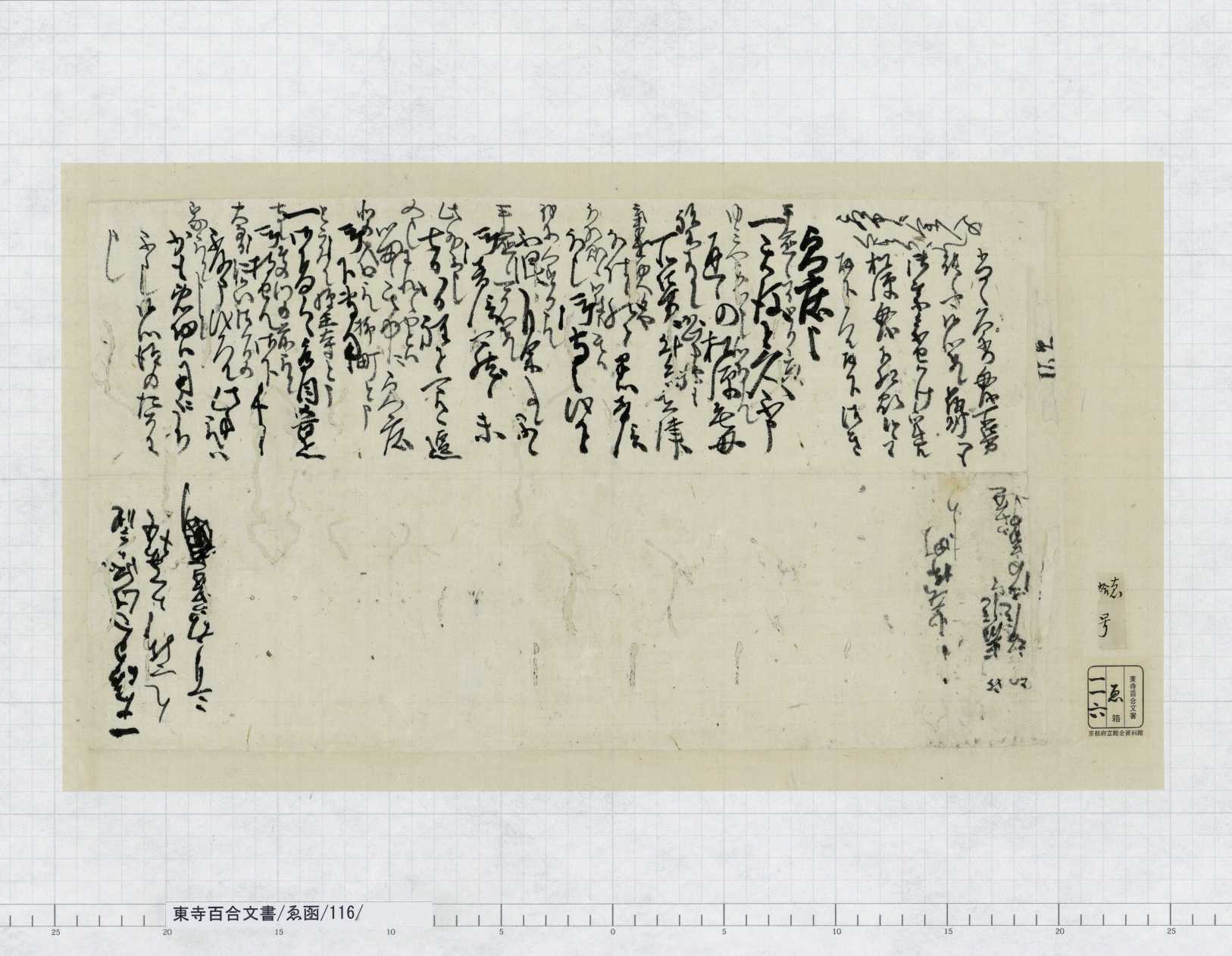
When a dispute occurred in the Sengoku period, the Toji temple asked Miyoshi Nagayoshi (三好長慶), a powerful figure who prevailed in the Muromachi bakufu (室町幕府, Muromachi shogunate) and across the Kansai and Shikoku regions, to preside over trials.
Because trials took many months and years, and were slow to resolve disputes, Toji concluded an agreement for consultancy with Yasui Soun (安井宗運) in 1556, for the purpose of enabling efficient proceedings. Soun advised Toji about proceedings, and notified them of movements by Matsunaga Hisahide (松永久秀) , a vassal of Miyoshi Nagayoshi who was in charge of trials involving Toji.
The letter dated March 5, year unknown, written by Yasui Soun (Item 116 of Box-we) is one of such reports submitted to Toji. When Soun acquired information that the mother of Matsunaga Hisahide was under treatment for sickness in Sakai (堺), he promptly departed for Sakai carrying medicine. Soun also recommended Hogon’in Yuju (宝厳院祐重) and Kanchiin Eisei (観智院栄盛) at Toji to visit Sakai with a monetary gift.
In the post script (the text written on the utmost right and between lines in small letters), Soun described that Hisahide’s mother was now getting better, and that he revitalized Hisahide, who was tired from worries about his mother, with the medicine that he brought.
Soun tells that he was staying in a large two-storied building in front of the gate of the Kyooji temple (経王寺), which was located in Yanagimachi (柳町), a town at the northern entry to Sakai. He had stayed in this building on June 23, 1556 (Item 282 of Box-ni ), suggesting that this building was Soun’s favorite accommodations.

Soun’s report indicates that Sakai in the Sengoku period covered a smaller area than the city of Sakai surrounded by circular moats in the later Edo period, with Yanagimachi as its northern end, that there was a two-storied hotel, and that state-of-the-art medicine was exercised in Sakai. It is also interesting to find out that Matsunaga Hisahide, who later burned down the great statue of Buddha at the Todaiji temple, was a loving son to his mother.
(Tadayuki Amano, Part-time Lecturer at Kansai University, and Part-time Lecturer at Shiga Junior College)